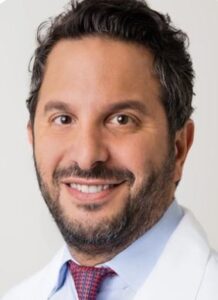NEW YORK, NY, UNITED STATES, March 14, 2023 /EINPresswire.com/ — Remember that old Bee Gees hit, “Staying Alive?” It’s taken on new meaning as a theme song of sorts for cardiopulmonary resuscitation, or CPR, since the emergency, lifesaving technique requires chest compressions timed closely to the chanting lyrics. “You might save a life just by following the straightforward steps involved in CPR,” says cardiologist Dr. Robert Segal1, the founder of Manhattan Cardiology2.Of course, no one wants to have to perform CPR. But about 350,000 people die from heart-stopping cardiac arrest3 each year in the United States, according to the American Heart Association. Offering immediate CPR to such individuals can double or even triple their chances of surviving after a cardiac arrest by keeping blood flowing to vital organs until trained medical staff arrive on the scene, Dr. Segal says.
“The chest compressions involved in CPR can keep someone alive until their regular heartbeat resumes,” explains Dr. Segal, a fellow of the American College of Cardiology whose research has been published in many respected medical journals. “More than half of all people who experience cardiac arrest somewhere other than a hospital don’t get the immediate help they need. If you’re equipped to perform CPR in that moment, you may be their lifeline.”
How to perform CPR
Someone experiencing cardiac arrest often seems fine one moment and then gravely ill the next. “They collapse and don’t respond to questions, such as asking if they’re OK,” Dr. Segal says. “The first step is to check to see if they’re breathing and if they have a pulse.”
“If they don’t, call 911—or ask another bystander to make the call—and initiate CPR,” he advises. “And if an automated external defibrillator, or AED, is nearby, send someone to fetch it while you begin the technique.”
Dr. Segal suggests following these steps to perform CPR:
• Place the person flat on their back.
• Put one of your hands over the other and place them in the middle of their chest, just under the nipples.
• Using the force of your body weight and keeping your arms straight, push down hard (about 2 inches) with the heel of your hand in the middle of their chest.
• Continue pushing down on the chest at a rate of 100 to 120 times per minute. Make sure their chest comes all the way back up between compressions.
• If you’ve had CPR training in the past, you can pause compressions to give 2 mouth-to-mouth breaths after every 30 compressions. To give rescue breaths, pinch the person’s nose closed while tilting their head back slightly and close your mouth over theirs, blowing so their chest rises.
• Continue chest compressions (and rescue breaths, if applicable) until the person revives or medical help arrives.
What happens afterward?
“CPR is rigorous, says Dr. Segal, so you’ll likely be exhausted after the person you’ve helped is being taken to a hospital by first responders. Your emotions will also be running high and you may be a bit lightheaded yourself, so take a well-deserved rest.”
Doctors and nurses will provide intensive care to ensure the person’s heart rate becomes (or stays) in a normal rhythm. They’ll also undergo testing to determine if there’s any organ damage from lack of oxygen and figure out why their heart stopped beating.
Dr. Segal adds that “not everyone who gets CPR survives. If this happens to the person you’ve helped, realize that without your intervention, they had no chance at all. There are no guarantees, but CPR is an absolutely critical first step toward potentially saving a life. Feel proud that you stepped up at a calamitous moment. You may have made all the difference between life and death.”
Manhattan Cardiology is the premier facility for cardiac testing and preventive treatment in New York.
Dr. Robert Segal is a board-certified cardiologist and the founder of Manhattan Cardiology, Medical Offices of Manhattan and co-founder of LabFinder. www.manhattancardiology.com www.LabFinder.com

